
Product Customization: How Ecommerce Businesses Can Get It Right
Consumers are willing to pay a premium for customized products. Let's dive into how ecommerce brands can approach their personalization strategy and meet the demand for more customization.
Key Takeaways
By the end of this article, you should have the knowledge and resources to “check the box” in these areas…
- Customization allows customers to make your product their own, and offering product customization is increasingly common among ecommerce retailers.
- When done right, product customization can help you increase conversion rates and brand loyalty by delivering exactly what customers want.
- There’s no one right way to approach ecommerce product customization, as every brand and every customer is different. There are strategies and examples that can help you find your own way.
Imagine you’re browsing through several shops looking for a new backpack. You see some tempting options, but they’re similar to the ones your friends and coworkers already carry. Nothing seems special or calls out to you.
But one shop you enter has an array of choices—and they offer to embroider your name or initials on your new backpack. Suddenly you’re ready to make a purchase because you can make your new bag truly yours.
That’s the power of product customization.
In this Insight, we’ll cover everything you need to know about ecommerce and online product customization, including how you can use this powerful tool to increase conversion rates and drive customer loyalty. Let’s get started.
What is product customization?
Advances in digital and manufacturing technology now enable brands to offer customization to buyers at scale. A customer can order a custom item with a few clicks online, the brand can produce it on demand, and the item can be delivered in a few days.
Instead of buying a standard off-the-shelf item, like sneakers or a couch, online product customizers let buyers choose their own design, color, and add-ons to create exactly the piece they want with a few clicks.
Having only a few standard options isn’t enough to satisfy many customers now—they’re accustomed to making purchases their own. Ecommerce enables companies to build online product customizers so buyers have a range of choices and can personalize their products.
The benefit of customization is that it further strengthens the user experience for the customer by inviting them to become partners in the product creation process. The better the user experience, the better the opportunity for conversions and building customer loyalty.
Retailers with a digital footprint supporting customization already have a significant competitive edge. To remain competitive long term, customization needs to be on every retailer’s technology roadmap.
Product customization is a differentiator and it’s here to stay
Nike has been at the forefront of product customization for quite a while now. The brand constantly runs experiments with digital in their flagship stores and partner retailers, with a lean toward in-store or online product customization.
Nike is actively selling customized products both online and off and has been for years. While many brands aren’t ready for this level of manufacturing and staffing coordination, they need to see the writing on the wall. Product customization is here to stay, and companies in a wide variety of industries must determine how to offer enticing product customization options to stay competitive.
Customer experience in ecommerce is a crucial differentiator for brands. Allowing your buyers to build exactly what they want on your ecommerce website in minutes offers more than simply a transaction—it’s an opportunity to build and strengthen your relationship with them.
You are not just selling them a product; you’re enabling them to express their uniqueness to the world.
The way Gen Z has approached the iconic LL Bean Boat and Tote product, by adding tongue-in-cheek words or phrases instead of the classic monogram, is a great example.
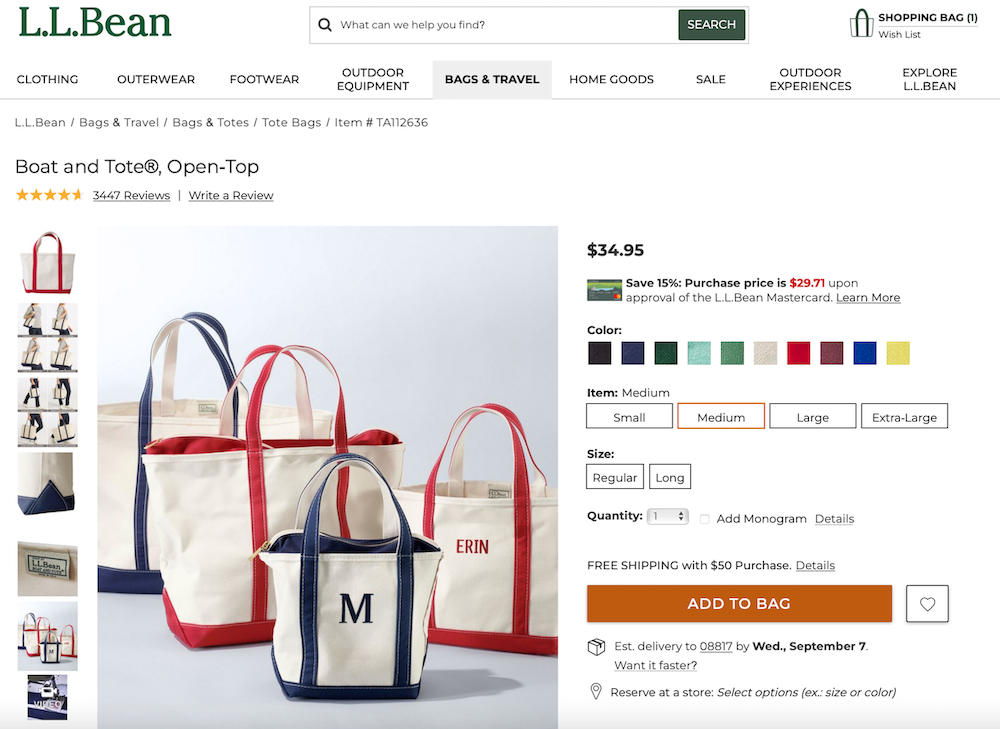
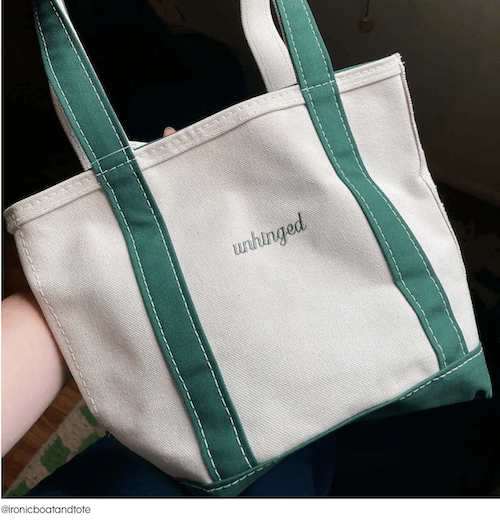
Image credit @ironicboatandtote on Instagram
LL Bean allows them to update an icon with their own twist, building name recognition and loyalty with the next generation of buyers. And this experience has paid off in profits too, as LL Bean experienced their highest summer sales spike in a decade.
Customers will pay a premium for customized products
Customization is about more than just offering fun options—it can also increase your conversions. Allowing buyers to create their own unique versions of your products can even increase the amount they’re willing to spend.
In fact, research from Deloitte reveals that 1 in 5 customers who want personalized products are willing to pay a 20% premium for them, and more than half of consumers want personalization and customization options. If your company can offer product customization at scale, your customers will buy more often and possibly even spend more.
Enjoying this article?
Subscribe to our newsletter, Good Question, to get insights like this sent straight to your inbox every week.
6 brands with unique online product customizers
Of course, customization will look different for every company depending on your industry and products. But these product customization examples can give you some inspiration for what successful execution might look like.
Medelita
Medelita offers tailored lab coats for scientists and doctors who want to look sharp while at work. And they offer chic customization options on their website as well, so their buyers can add their name, department, and logo to make the coat truly their own.
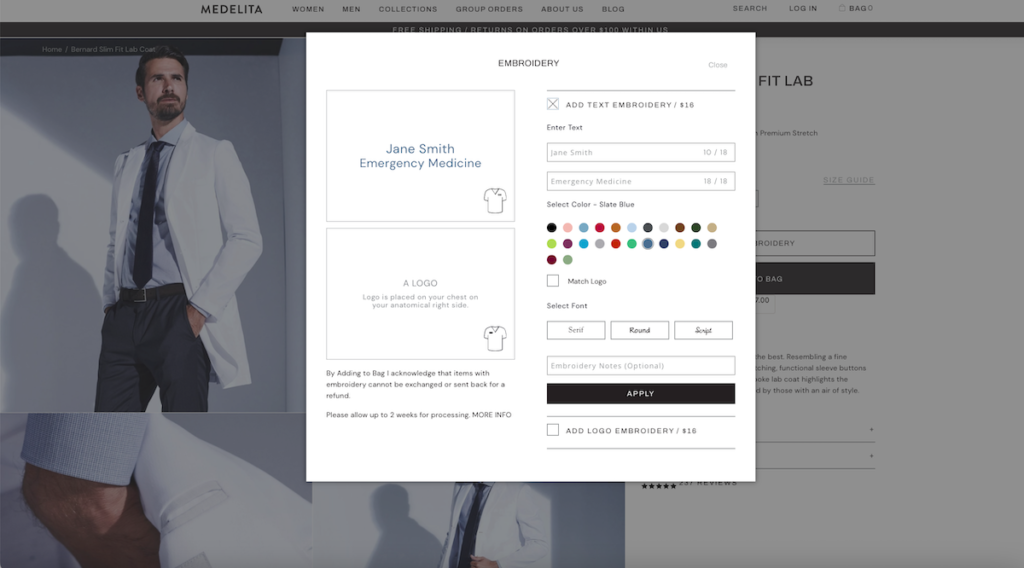
The best product customization websites, like this example, allow customers to see exactly what the customization will look like in real life once it’s delivered. Ensuring this view is accurate will make your customers happier once they receive their new custom product from your ecommerce site.
Pottery Barn
Pottery Barn offers customization options on some of its most classic bedding and towels. These options help customers build spaces in their homes that are truly their own.
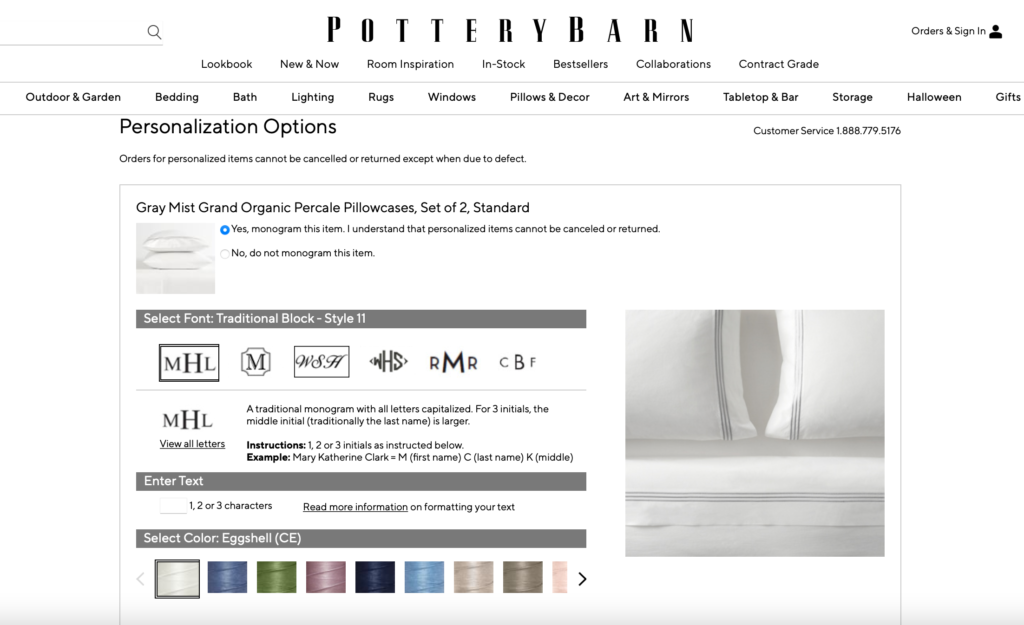
They offer many options for their monograms to ensure customers can find an option they love, including different arrangements, fonts, and thread colors. The ability to make home basics like sheets and towels elevated and special with customization is a compelling offer and likely drives customer satisfaction.
Starbucks
Starbucks is a hugely successful company that is also a leader in offering product customization options for customers. They can choose exactly how they would like their drinks, leading to those sometimes amusing very long orders (venti vanilla half-caf extra-hot skim latte, anyone?).
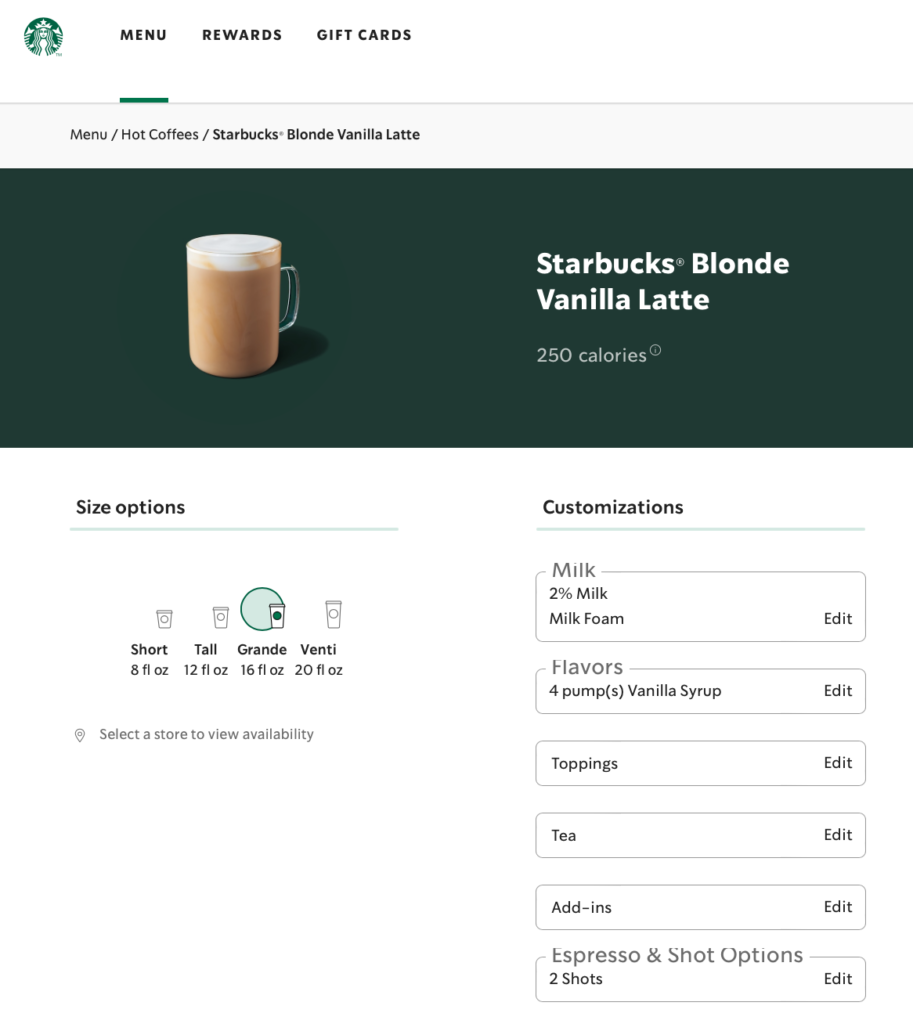
This kind of ordering is very easy with their great mobile app, but even before that came out they’ve been champions of the highly custom drink order. While most other coffee shops will simply ask you if you want that latte with whole or skim milk, they go far beyond and offer customers a special experience.
Chik-fil-A
Chik-fil-A’s popular Chicken Biscuit looks simple at first glance—a juicy piece of fried chicken on a biscuit. But when you head online to place your order, you’re offered a slew of customization options so you can create precisely the sandwich you’re craving.
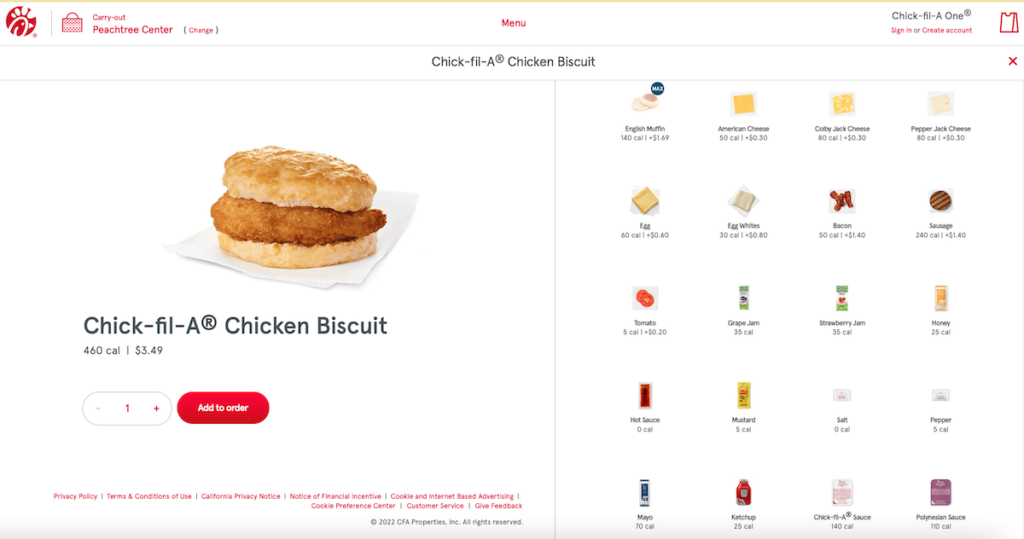
With extensive choices for sauces, toppings, and add-ins like bacon, honey, and Colby Jack cheese, customers can build their own perfect sandwich with just a few clicks. And if that’s not enough, they even let you add special instructions in case you want to customize further.
Inkbox
Inkbox offers a wide variety of stick-on temporary tattoos for those who want to experiment with body art without the commitment of going under the needle. But in a truly innovative twist, they also allow customers to upload their own images and make them into a stick-on, with their choice of size and color as well.
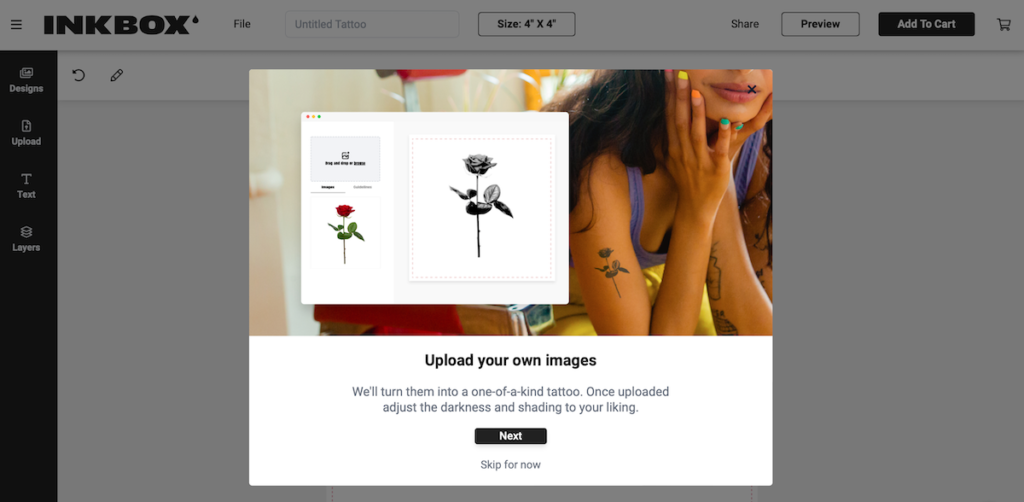
This product configuration option allows customers to try out their own tattoo idea to see if they want to commit to it or to create customized tattoos for a special occasion or event. Allowing customers to create these kinds of hyper-personalized products helps Inkbox stand out from other temporary tattoo retailers and get more conversions.
Knoll
Knoll sells high-end, highly customizable furniture for homes and offices. They offer so many custom options, in fact, that their case study serves as an excellent guide to other companies in a similar position.
When they underwent a Comprehensive Conversion Audit™ with The Good for their online store, they found that having so many options (while necessary for their upmarket clientele) also made customers abandon their shopping carts when faced with too many choices right away.
Being thoughtful and strategic about how you present your customization options is just as critical as having them available—there is such a thing as too much choice.
But with a few smart moves like numbering the options, letting customers email their cart to a spouse or boss, and saving their cart so they could come back with ease to finish, their conversion rate skyrocketed.
Product customization and beyond: building a better digital experience
While a good first step, simply offering customized products online isn’t enough on its own to increase conversions in most cases. Here’s how you can take it one step further and create a 360 degree personalized experience.
Use data to personalize more than just products
The trend toward digital customization may start with products but it definitely does not stop there. Digital also connects the experience a customer has in-store or on-site to the continued brand relationship, by providing more interesting content and follow-up offers based on past purchasing behavior.
With all of the data that companies collect on buyers, it’s no surprise that customers expect a more personalized experience.
Offering them meaningful personalization with customization of products, targeted offers, and loyalty rewards gives customers a better experience. Customization isn’t enough to build a better customer experience on its own, so be sure to continue building that strong relationship with customers throughout the post-purchase experience.
Anticipate future needs
Product customization allows your customers to get exactly what they want, and it benefits your business as well. You can use data on what customers are choosing for customization options to anticipate their needs and preferences in the future as well.
For example, let’s say you notice that pastel shades are suddenly a super-popular choice in custom orders for shoes, particularly pink and blue together. You can use this information to create a new non-custom product in pastel pink and blue and see if they take off as a new trend.
Or you might observe that customers are abandoning their shopping carts while personalizing an item once they need to choose a strap length option for your bags. You can conduct a survey or focus group asking potential buyers what strap lengths they would prefer, and introduce a new option to see how it performs.
Running tests in retail makes it easy to find out which options are most helpful for which customers, and is a great way to gather actionable data that can help anticipate future needs.
Test and improve the customer experience
Ecommerce platforms that offer product customization—Shopify, for example—make setting up your own product customization function for your ecommerce store simple.
Increased ease and functionality means you can scale your customization options, even for smaller items. Your buyers get a better customer experience without requiring as much in-person customer service assistance, which is a win all around.
To ensure your customization options are optimized to increase your conversion rates, test your product customizer with real users. Get their candid feedback and make data-backed decisions on how to improve.
Transparency around pricing and shipping times is important too, as customization typically increases both. Make sure you include these details before, during, and after checkout. We have found that using benefits-focused language like “made for you” can help ease the pain of a longer wait time.
Planning and coordinating for product customization success
This level of sophistication in customization is the product of coordinated efforts of multiple departments and requires a good deal of planning to create something valuable to customers and the business.
Brands must keep up with what their customers want, and today’s buyers have come to expect more and more customization options, especially in the ecommerce space. Simply put, making it easy to create what they want will keep customers coming back.
Determining how you can provide these experiences at scale can increase both your conversion rates and customer loyalty rates—the foundation for a strong business.
Enjoying this article?
Subscribe to our newsletter, Good Question, to get insights like this sent straight to your inbox every week.

About the Author
Caroline Appert
Caroline Appert is the Director of Marketing at The Good. She has proven success in crafting marketing strategies and executing revenue-boosting campaigns for companies in a diverse set of industries.